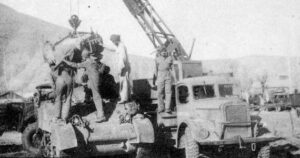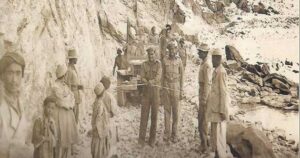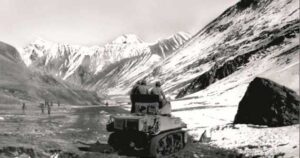1st November, 1948 – One of the greatest battles in history was undertaken – Battle of Zojila Pass. The Indian Army did what had never ever been done before. The story of this battle should be in school books of Indian children. Zojila Pass lies on the road connecting Srinagar to Kargil, Dras and Leh. It lies at 3529 meters (11578 feet) and is even today the toughest stretch to travel on in 2016 (as informed by my friend Dheeraj who travelled by motorbike from Manali to Leh and down to Srinagar last month). The Pakistani forces had taken over Kargil and Dras in 1947 and by late 1948 they were just 30 km from Leh, capital of Laddakh. Leh was defended by a small contingent of 70 armed men who could be easily annihilated in no time by the toughened infiltrators from Waziristan, NWFP mixed with Pakistani army regulars. The emergency was understood by the Indian army commanders as Zojila was in complete occupation of Pakistanis who had established posts high up on the pass preventing anyone to pass through. The initial attack on Zojila, codenamed `Operation Duck’, was launched by 77 Para under Brig. K.L. Atal on the 29th of August, 1948. The troops had no acclimatisation and they had only light clothing, the operation failed. Major General K S Thimayya is known to have said “…the fall of Leh will be a strategic blow to India. It has to be saved at all cost….. I will be on that flight in your cock-pit. So let’s go.” The GOC-in-C Western Command, Lieut. Gen. K.M. Cariappa (we have Carriapa street in Meerut), now understood that something drastic had to be done and an audacious plan was made. Gen. Cariappa now ordered – “Change the name of the operation from Duck to Bison, but continue we must with our plan with Zojila and capture Kargil.” Tanks had never ever been used at such heights in the history of warfare, but the Indian army was to do what was never done before. Stuart Mk-VI tanks of the 7th Cavalry commanded by Lt-Col Rajinder Singh “Sparrow” were given this task. Utmost secrecy was essential. Turrets of the tanks were removed and they were moved through the valley at night after curfew had been declared so that no one would know what was happening. The 4th Engineer Regiment of the Bengal Sappers did the impossible task of converting 8 km of mule tract (khacchur track) into a road on which tans weighing 11 tons could move. Sappers of the Indian Army cut the mountains and made a road capable of taking tanks in just 20 days. Now the tanks were moved forward, jawans had to push them initially on the steep slopes manually to position them for the final assault. The assault was undertaken on the 1st of November, 1948. The Pakistanis were shocked to see tanks at that height and their officers further inland could not believe the messages that they were getting from the front. The tanks blew away the pickets at the heights and Indian infantry than moved in to clear the rest of the infiltrators. Tanks now moved forward and by 12th November they had reached near Kargil and by 24th November 1948 Kargil was taken and Leh was safe.


